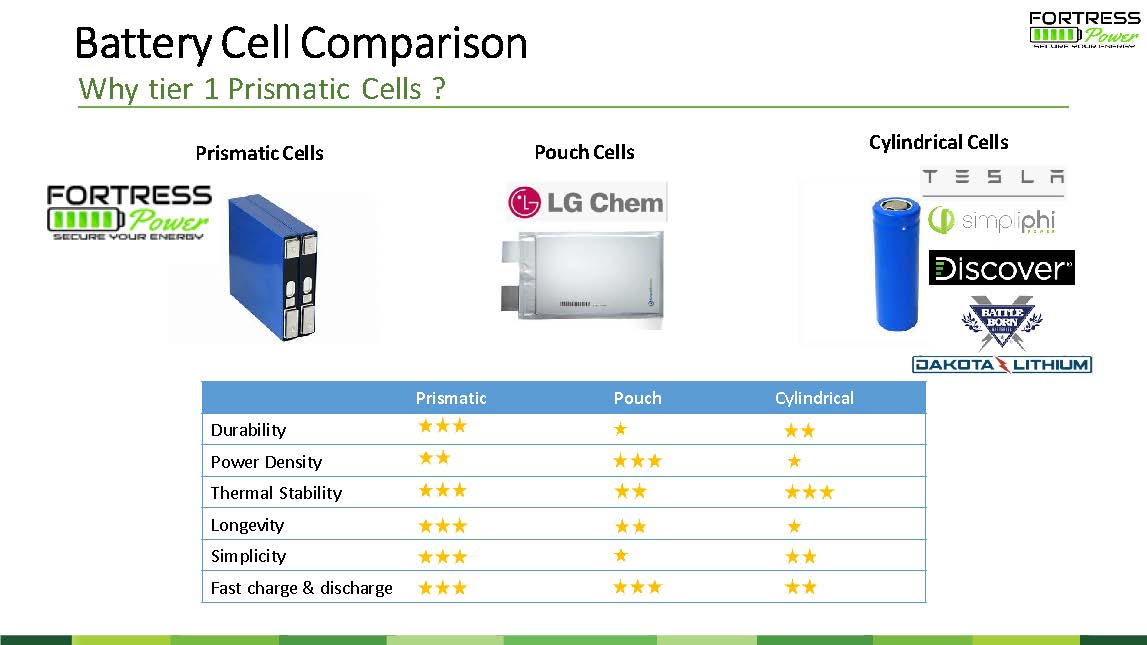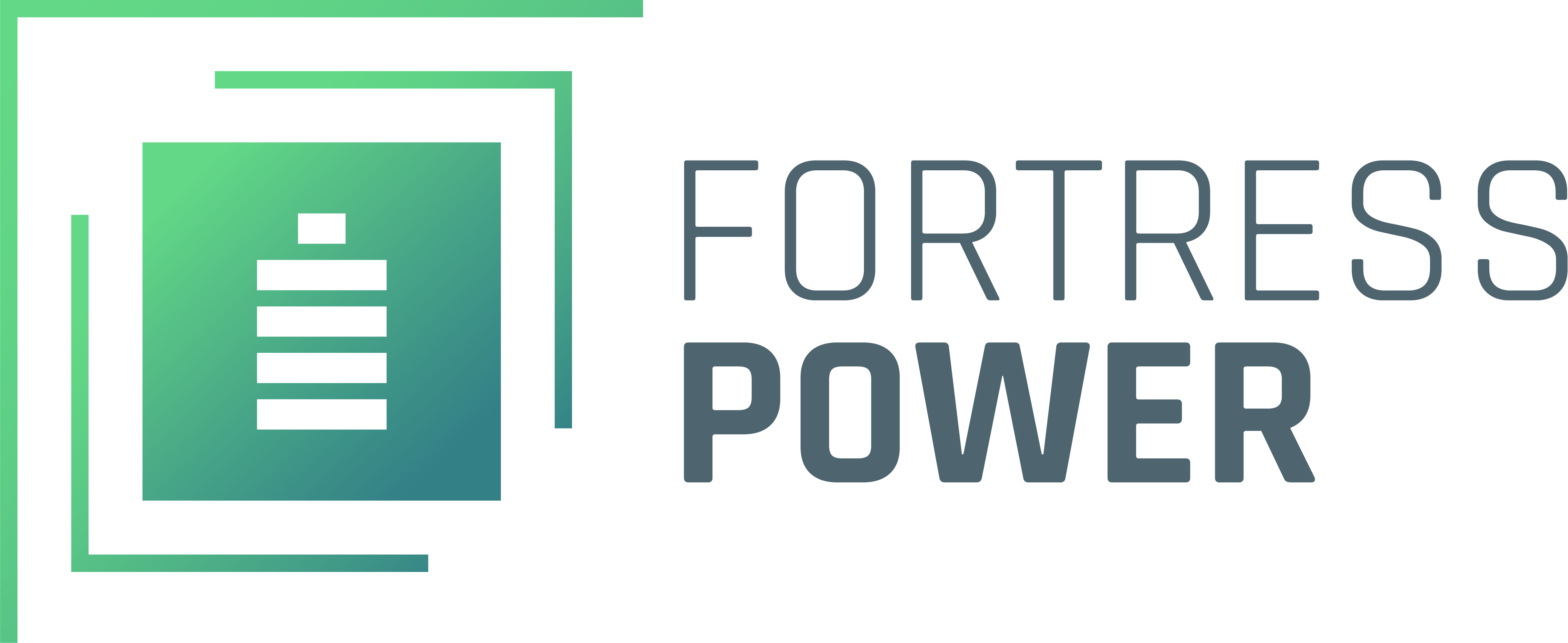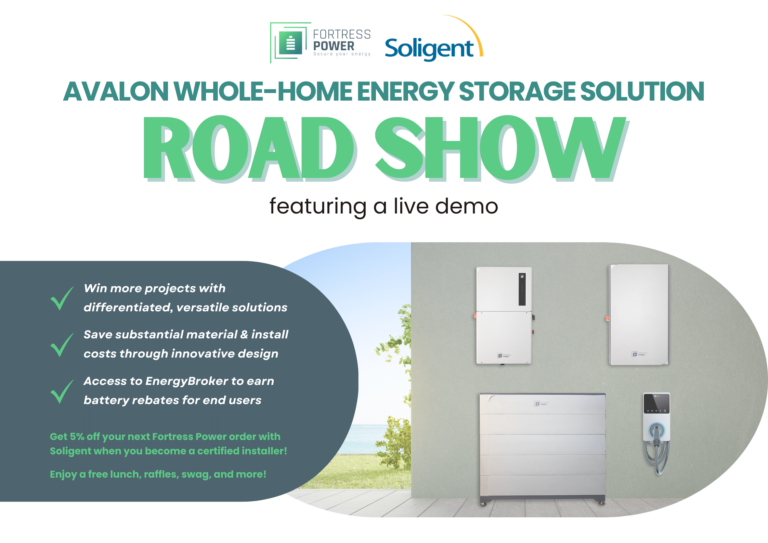When you take a closer look at battery storage solutions, you see major differences in the products from the top manufacturers. The form and function are different. The aesthetic and capabilities are different. The technology is different. The level of complexity is different.
These and other factors need to be taken into account before you decide which battery storage solutions you’re going to recommend to your residential customers. Let’s start with an overview of Fortress Power’s two most popular batteries.
The eVault 18.5 and the eFlex 5.4
The Fortress Power eVault 18.5 is designed to enable a simple installation and provide large storage capacity. In fact, the eVault is the largest Self-Generation Incentive Program (SGIP)-approved battery storage product for residential applications on the market. The eVault is scalable up to 220 kWh and comes with local monitoring through an LCD display.
The eFlex 5.4 has a modular design with cell-to-pack architecture and comes with an outdoor-rated, IP 65 aluminum enclosure. This gives you the flexibility to install the unit wherever you want, whether on a wall, in a standard shelf rack, on the floor, or in an outdoor space such as a patio. Up to four eFlex units can be installed together. These are essentially plug-and-play solutions with fewer parameter settings than other batteries.
Because of the high IP rating that we built for the eFlex unit, we also integrated heat sink to increase the battery cell’s thermo performance to five times the performance of other batteries. This allows the heat generated from each cell to be quickly dispensed to increase battery lifespan. The eFlex is designed for renewable energy applications but can also be used for telecom, railway, marine, and RV applications.
Both the eVault and eFlex have a smart battery management system (BMS) that enables remote monitoring and closed-loop communication. Both have a sleek aluminum enclosure that not only offers an aesthetically pleasing design, but also protects the battery from the weather, including rain and saltwater.
Other lithium iron phosphate batteries on the market have plastic or iron cases, which are susceptible to saltwater corrosion in an oceanfront environment. They can only be installed indoors and several would have to be installed to match the capacity of the eVault, making installations more complicated, time-consuming, and expensive.
Now, let’s unbox the battery.
Why Fortress Power Uses Prismatic Battery Cells
There are three battery cells on the market – prismatic, pouch, and cylindrical.
Fortress Power only uses tier 1 prismatic cells, which offer a number of advantages for installers and their residential customers. Prismatic cells have lower degradation, making the battery more durable and longer lasting. They have excellent power density and thermal stability, which help extend the battery’s lifespan. Prismatic cells also have a simpler architecture, which translates to lower energy use, easier management, and faster charge and discharge.
See how tier 1 prismatic cells compare to pouch cells and cylindrical cells.

Why We Build Our BMS with a Smart, Embedded Computer
The BMS is the brain of the battery storage unit. There are two primary BMS versions on the market.
The first is metal oxide semiconductor field effect transistor (MOSFET). A MOSFET BMS is cheaper, but it’s also less durable. If the BMS fails, the battery will charge or discharge constantly, causing the temperature of the cell to increase with no protection.
A MOSFET BMS has limited scalability and reliability and is only capable of open-loop communication, which means the battery and inverter can’t communicate with each other. This can shorten the lifespan of the battery. Also, open-loop communication does not support communication between batteries in parallel, and the BMS cannot connect to the IoT.
One potentially dangerous scenario involves the battery reaching a high temperature. Because of the lack of communication between inverter and battery, the inverter would continue to charge and discharge the battery. With closed-loop communication, the BMS will tell the inverter that the temperature is too high so the inverter knows to reduce the charge and discharge rate.
Fortress Power uses a digital processor-based BMS. This BMS comes with a solid-state relay and fuse, so if there’s a problem with an inverter, it will disconnect to protect the battery’s cell. Unlike a MOSFET BMS, a digital processor-based BMS offers higher input and output power and can safely respond to the inverter’s inrush current. When you turn on the inverter, it generates a current as high as 2,000 amps, which could cause a cheap BMS to fail.
A digital-processor-based BMS also enables closed-loop communication with the inverter, as well as communication between batteries in parallel. This is important because the eVault is highly scalable (up to 220 kWh) with maximum reliability. There needs to be communication between batteries and the inverter to optimize battery usage.
Fortress Power batteries are designed to be Internet of Things (IoT) ready. We envision an energy storage system of the future that sits at the center of home automation, capable of “talking” to other smart products in the home. We’re also planning to launch an app that allows you to monitor the battery and perform field diagnostics.
To be clear, our battery storage unit can work without communication. You can choose not to use the communication cable and the battery will function just fine. However, this capability makes it possible to achieve higher accuracy by dynamically charging and discharging the battery based on the percentage, not on the voltage.
With lithium iron phosphate chemistry, if you use voltage to measure the percentage, the inverter uses manual battery charge and discharge settings, resulting in a variance of plus or minus 10 percent. This is why it’s preferable to leverage closed-loop control to regulate via state of charge and use the percentage to charge and discharge the battery. More precise control leads to better system performance, longer battery lifespan, and higher energy output.

Support Is Everything
The level of support solar energy system installers receive from manufacturers can have a direct impact on their revenue and the customer experience they deliver. We take our customer relationships seriously.
You can always get on the phone with a member of the Fortress Power sales and tech teams. You can also use our online resources, including Podium Chat, the Discord Community forum, and blog articles and videos from Fortress Power about installations, applications, case studies, training, and industry trends.
To learn more about Fortress Power lithium iron phosphate batteries compare to competitors, call 877-497-6937.









